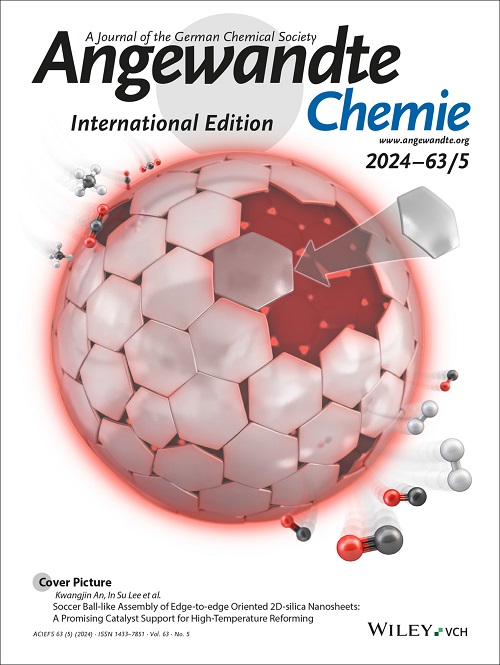IF 16.1
1区 化学
Q1 CHEMISTRY, MULTIDISCIPLINARY
引用次数: 0
摘要
电化学二氧化碳还原反应(CO2RR)为传统化学工业的脱碳提供了一条绿色通道。在这里,催化剂的结构选择性关系对于控制高选择性和高活性的 CO2RR 途径至关重要。我们报告了一种氧取代的 C2N 无金属催化剂(O-CN)的制备过程,该催化剂用于电化学 CO2 到 CO 的转化,具有可调的 O 微环境。综合光谱分析揭示了 O-C2N 中精细定制的 N-C-O 分子,在较高的热解温度下,C-O-C 物种(如环平面内醚)成为主要的氧构型。根据实验观察,建立了外环 O 取代 N-C-O-C 分子与 CO 选择性之间的相关性,为活性结构设计提供了明确的化学工具。优化后的 O-C2N 电催化剂以 C-O-C 分子为主,具有出色的 2e- CO2RR 性能,CO 选择性高达 94.8%,可在具有可调合成气特征的实用流化反应器中保持良好的性能。本文章由计算机程序翻译,如有差异,请以英文原文为准。
Oxygen-Substituted Porous C2N Frameworks as Efficient Electrocatalysts for Carbon Dioxide Electroreduction
The electrochemical carbon dioxide reduction reaction (CO2RR) provides a green avenue for decarbonizing the conventional chemical industries. Here, a structure–selectivity relationship of catalysts is pivotal for the control of a highly selective and active CO2RR pathway. We report the fabrication of an oxygen-substituted C2N as metal-free catalyst (O-C2N) for electrochemical CO2-to-CO conversion with tunable O microenvironment. Combined spectroscopic analysis reveals a fine tailored N-C-O moiety in O-C2N, where C-O-C species (e.g. ring in-plane ether) become the dominant oxygen configurations at higher pyrolysis temperatures. Based on experimental observations, a correlation between the exocyclic O-substituted N-C-O-C moieties and CO selectivity is established, giving clear chemical tools for active structure design. The optimized O-C2N electrocatalysts with the dominant appearance of C-O-C moieties exhibits an outstanding 2e- CO2RR performance with a CO selectivity up to 94.8%, which can be well maintained in a practical flow-cell reactor with an adjustable syngas feature.
求助全文
通过发布文献求助,成功后即可免费获取论文全文。
去求助
来源期刊
CiteScore
26.60
自引率
6.60%
发文量
3549
审稿时长
1.5 months
期刊介绍:
Angewandte Chemie, a journal of the German Chemical Society (GDCh), maintains a leading position among scholarly journals in general chemistry with an impressive Impact Factor of 16.6 (2022 Journal Citation Reports, Clarivate, 2023). Published weekly in a reader-friendly format, it features new articles almost every day. Established in 1887, Angewandte Chemie is a prominent chemistry journal, offering a dynamic blend of Review-type articles, Highlights, Communications, and Research Articles on a weekly basis, making it unique in the field.

 求助内容:
求助内容: 应助结果提醒方式:
应助结果提醒方式:


